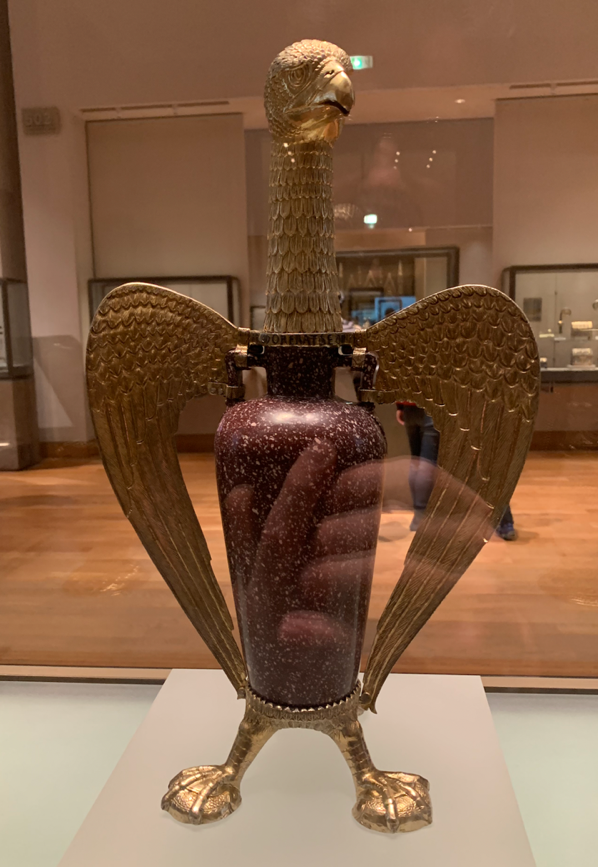

Suger’s Kitsch Eagle
My Louvre by Antoine Compagnon

Suger’s Kitsch Eagle
Suger, the abbot, statesman, builder of the Basilica of Saint-Denis, inventor of Gothic architecture, has always greatly impressed me. This dates to when I was a young man and I read the renowned art historian Erwin Panofsky’s Gothic Architecture and Scholasticism, translated into French in 1967 by none other than the sociologist Pierre Bourdieu. Though Panofsky does not state it outright, he suggests that gothic architecture is a transposition of Neoplatonic metaphysics, according to which divine light reflects itself in earthly materiality. Under this reading, the cathedral, an architecture of light, allows the human intellect to elevate itself to the knowledge of God. This daring correspondence between architecture and thought—between cathedral and book, as in Victor Hugo’s Notre-Dame de Paris—attracted a following in the heyday of Structuralism. Roland Barthes often invoked it to distinguish between subtle homology and dumb analogy. But what does Suger’s Eagle—this extravagant Roman porphyry vase forming the body of a gilded silver eagle with unfurled wings transformed into an ewer that poured water out of its beak—what does this have to do with Neoplatonism, Scholasticism, and the Gothic (Richelieu, room 502, MR 422)? It seems to me that, of itself, this kitsch, precious, baroque or rococo eagle refutes Panofsky’s thesis. I was thinking about it on the day of the Notre-Dame was in flames.